Steps behind the image: Orilla Verde Autumn
4 Comments
To those who celebrate the occasion, Merry Christmas!
Day 5
After driving 350 miles straight from Las Cruces save for a gas stop, I breathed a sigh of relief upon seeing bright yellow spots dotting the Rio Grande River gorge. Shortly past the village of Pilar, NM-570 follows the river banks inside the gorge as forms a riparian corridor where the foliage of cottonwood trees contrasts with the barren plateaus above. Over the past days, I had been more hurried than I liked because I wanted to get to Rio Grande Del Norte National Monument while the leaves would still be on the trees.
Northern New Mexico as a whole is high desert, and most of Rio Grande Del Norte National Monument is about 7,000 ft. In December and January, temperatures barely rise above freezing even in the middle of the day. Snowfall occurs from November to April. During my first visit to Rio Grande Del Norte National Monument, at the end of December, when from a distance everything appeared bare and brown, a closer look at the shrubs revealed a varied palette of colors. However, as they were quite subtle, I still wanted to capture the lushness of the canyon with foliage. After coming back from a two-week trip to the Northwest at the beginning of October, I was planning to stay home for a month before hitting the road again. When in mid-October I inquired with a photographer living near the monument about fall foliage, he told me that it was turning quickly and would likely be gone by the beginning of November. Thus, I resolved to leave after barely two weeks at home. As I didn’t want to drive more total miles than absolutely necessary, I had to visit my target destinations in the specific order that would minimize the distance driven instead of heading to Rio Grande Del Norte National Monument first. As I was hiking in the desert, my mind was preoccupied by wondering if during those extra days the foliage would hold.
NM-570 stays inside the gorge for six miles past several riverside campgrounds, picnic areas, boat launches, and trailheads in the Orilla Verde (“green banks”) Recreation Area. Past the Taos Junction Bridge, the road turns briefly to dirt and climbs out of the gorge on the west side. As it was already late afternoon, with just two hours of daylight left, I turned around to head to my next destination. On my way up the gorge, I was mostly trying to evaluate possibilities as I was driving, with the idea of photographing on the drive back. On the way down the gorge, I made a single stop at the location that looked the most promising. I started with a wide-angle composition from the pullout, but the roadway intruded in the picture.
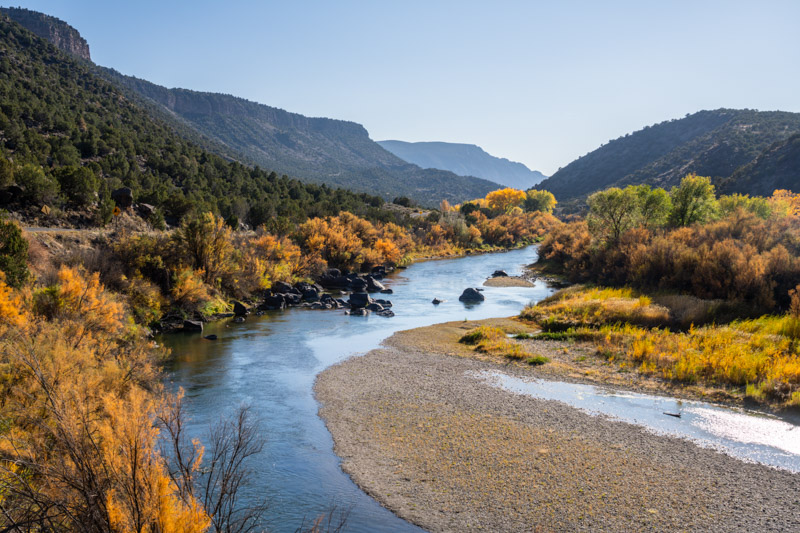
Framing more tightly eliminated the part of the roadway on the left of the image. However, a distant segment of it became more visible.
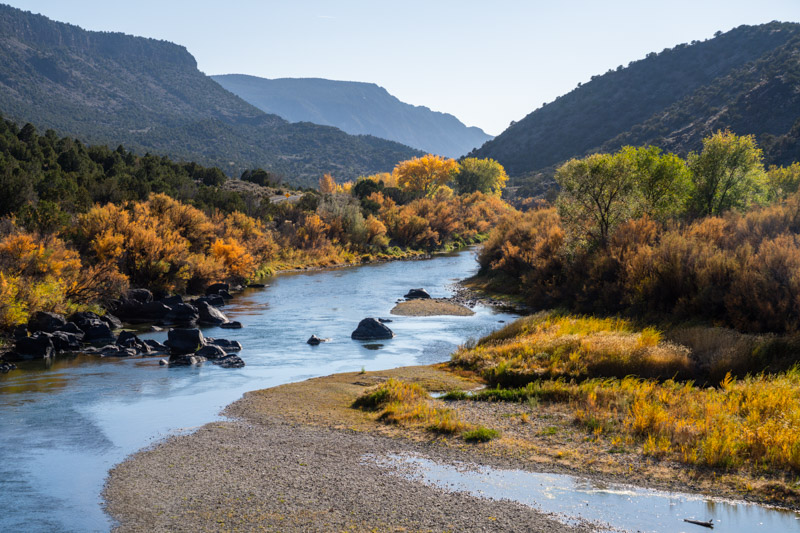
I tried a vertical composition that excluded the roadway, basically the right half of the previous image. While it is balanced enough, the flow wasn’t as good, and besides, I still wanted a horizontal composition.
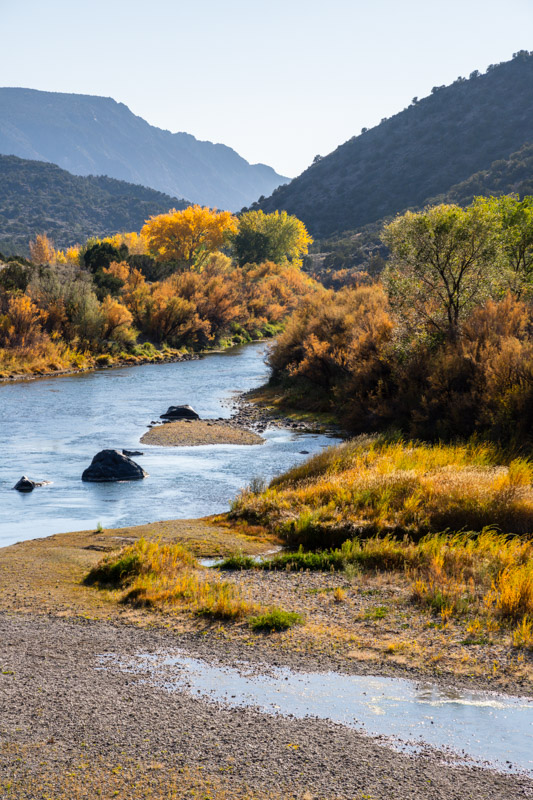
Since I had exhausted the possibilities from the pullout, it was time to try a new viewpoint. I scrambled down the slope, so I would stand below the road level. From there, the trees hide the roadway.
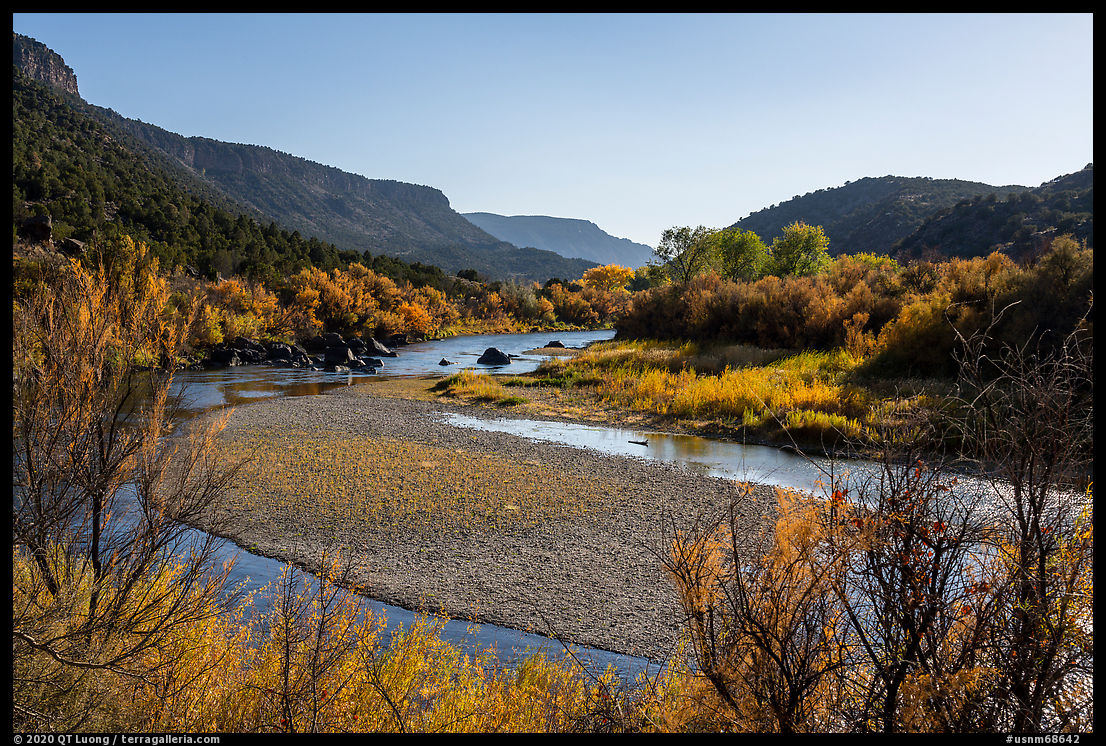
Compared to the original wide-angle composition, improvements are possible. The river is partly obscured, therefore interrupting the flow, an issue similar to the modern photos of the Snake River Overlook picture where trees have grown since Ansel Adams created his celebrated photograph. The shape of the central riverbank also becomes too prominent.
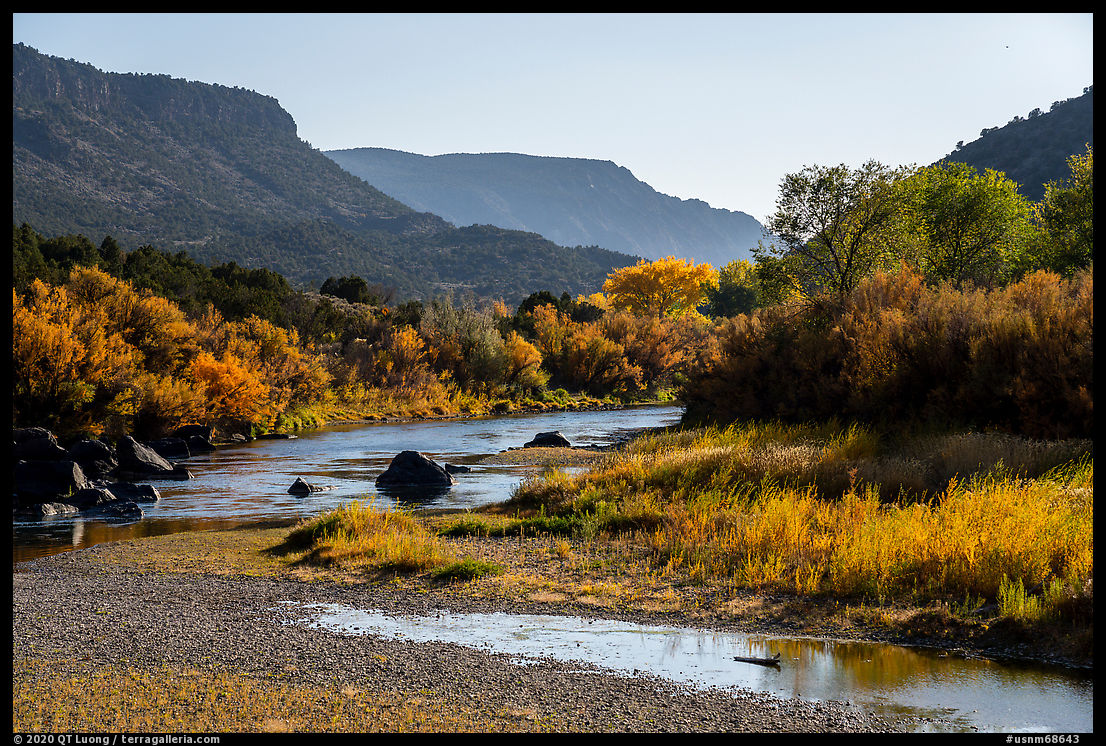
Framing more tightly fixes those issues, with the arm of the river to the right now leading the eye from the right bottom corner and more prominence given to the trees.
Afterward, I drove to the Taos Valley Overlook. On the way, although a quick glimpse of a faraway view of the gorge looked intriguing, I didn’t stop. I didn’t realize it at the time, but this turned out to be maybe the first miss on the trip.
The Last Road Trip: 1 | 2 | 3 | 4 | 5 | 6 | to be continued


QT,
Thanks, it’s great to see your process when making a photo at a place. I learn a lot, and I think your final image is by far the best. Happy Holidays
I am learning so much from studying your books and I thank you for taking the time to describe your process in your blogs. I just read your August 2009 blog. So much has changed since then – and not in a good way. We need to continue to raise everyone’s awareness of the importance of preserving the Earth’s resources. Your leadership in educating more photographers to show what we need to save is valued by all environmentalists. Thank you for all you are doing!
Thank you Barbara for the kind words. I sometimes forget I’ve been blogging for that long. In those intervening years, I’ve certainly become more aware of the importance of public lands conservation!
Thank you for sharing your process in fine-tuning the composition of the river. Very useful to see how you arrived at the final composition.
Thank you for your beautiful work. Your work with large format film inspired me to begin my own journey with large format photography.